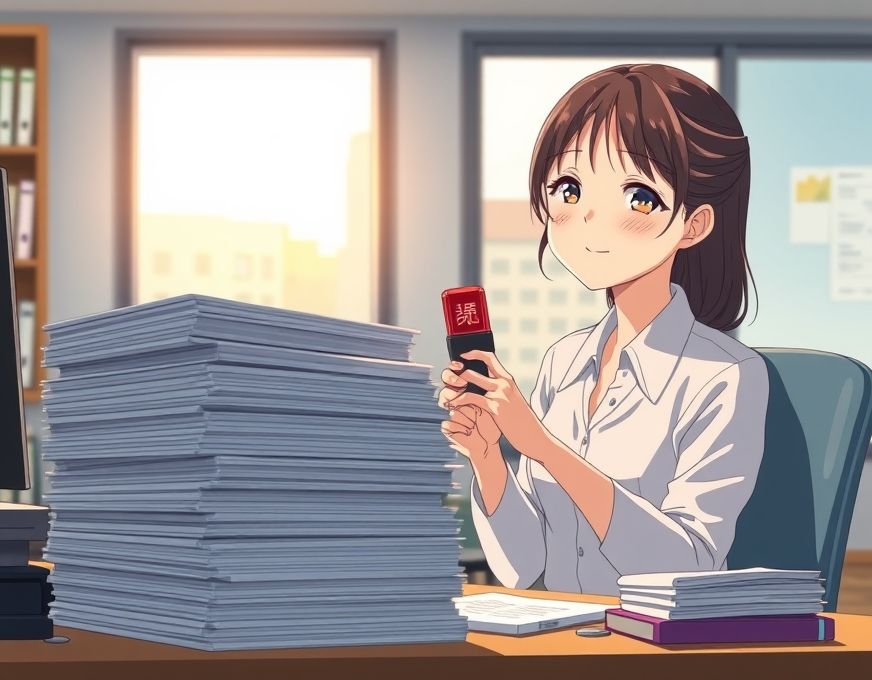
The 99% Finish Line Trick: Mastering「あとは〜だけ」for That Final Step.
Hello, warriors conquering real-world Japanese!
Have you ever been in this situation? You've spent hours, maybe even days, grinding away on a report, a presentation, or a project. Everything is almost done; you've completed 99% of the work. There's just one final step left, maybe waiting for your boss's approval, a client's feedback, or simply hitting the "send" button. 😫
In that moment, how do you feel? A mix of relief that it's almost over and a bit of anxiety about the final step. To express this "almost at the finish line" feeling as naturally as a native speaker, today we're going to decode the master trick: 「あとは〜だけ」 (Ato wa ~ dake).
This is a grammatical structure you'll rarely see emphasized in textbooks, but it's used DAILY by Japanese people in both work and daily life. Mastering it will take your communication skills to a whole new level! 😉
🧐 「あとは〜だけ」: Not Just Grammar, But an Art Form
First, let's break down its structure:
- あと (Ato): The rest, what's left
- は (wa): The topic-marking particle
- 〜だけ (dake): Only, just
Putting it together, a literal translation would be: "As for what's left, it's just..." or more smoothly, "All that's left is...".
It sounds simple, but the power of this phrase lies in the two contrasting nuances it can carry, depending on the context.
Nuance 1: The Sigh of Relief 😌 "Almost done!"
This is the most common usage in everyday life. It indicates that the most difficult, labor-intensive part is over, and now only a small, simple final step remains. It conveys a sense of accomplishment and relief.
Here are some examples to help you visualize it:
🍳 When cooking: 「カレーの準備は全部できた。あとは煮込むだけだ。」 (I've finished all the prep for the curry. All that's left now is to let it simmer.) Subtext: The tiring part of chopping and sautéing is done, now I just have to wait. ✨
✈️ When preparing for a trip: 「航空券とホテルの予約は完了!あとはパッキングするだけ。」 (Flight tickets and hotel are all booked! The only thing left is to pack.) Subtext: The complicated procedures are handled, now it's just the simple task of packing clothes. 🎉
Nuance 2: The Subtle Passing of the Baton 👉
This is the real game-changer in the Japanese workplace, where direct communication can sometimes be a big no-no. When you use 「あとは〜だけ」at work, it's not just a progress report; it's also a way to subtly hand over responsibility to the next person.
It's like saying, "My part is done. The ball is in your court now." ⚽️
Let's look at a classic scenario:
You've finished a document and need your boss (Tanaka) to review it.
You say to your boss: 「田中部長、先日ご依頼いただいた資料、作成完了しました。あとは部長にご確認いただくだけです。」 (Manager Tanaka, I've completed the document you requested the other day. Now, all that's left is for you to review it.)
Let's analyze this more deeply:
- On the surface: You are politely reporting your progress.
- The hidden meaning: You are implicitly saying, "I've done my part. Whether the project gets delayed now depends on how quickly you review this." It's an incredibly effective way to give a gentle nudge without sounding pushy or disrespectful.
Another example with a colleague:
Colleague: 「あのプロジェクト、進捗どう?」 (How's the progress on that project?) You: 「うん、僕の担当分の実装は終わったよ。あとは鈴木さんのテストを待つだけ。」 (Yeah, my part of the implementation is finished. Now we're just waiting for Suzuki-san to test it.)
This answer clearly reports your progress while also specifying who is responsible for the next step. Extremely professional!
💡 Tips for Using「あとは〜だけ」 Like a Pro
- For self-motivation: Mumble it to yourself. 「よし、あとはこれを提出するだけだ!」 (Alright, now I just have to submit this!). It creates momentum to finish the last bit of work.
- To gently remind others: Use it with polite form (です/ます) and a humble attitude. It will serve as a powerful reminder while keeping the peace.
- Combine it with 表情 (facial expression): The same sentence with a cheerful expression means "I'm so excited it's almost done!". If said with a neutral expression while making eye contact, it carries the nuance of "It's your turn now."
In conclusion, 「あとは〜だけ」 is a small but mighty communication weapon. It not only helps you accurately express the state of being "one step away" but also serves as a powerful tool for skillfully navigating responsibilities and pushing work forward in the Japanese office.
Next time you complete 99% of a task, don't just wait in silence. Try using 「あとは〜だけ」. People will surely be impressed by your nuanced and sophisticated Japanese! 🚀
Thẻ liên quan:
Lan tỏa kiến thức
Chia sẻ những điều hay ho với bạn bè